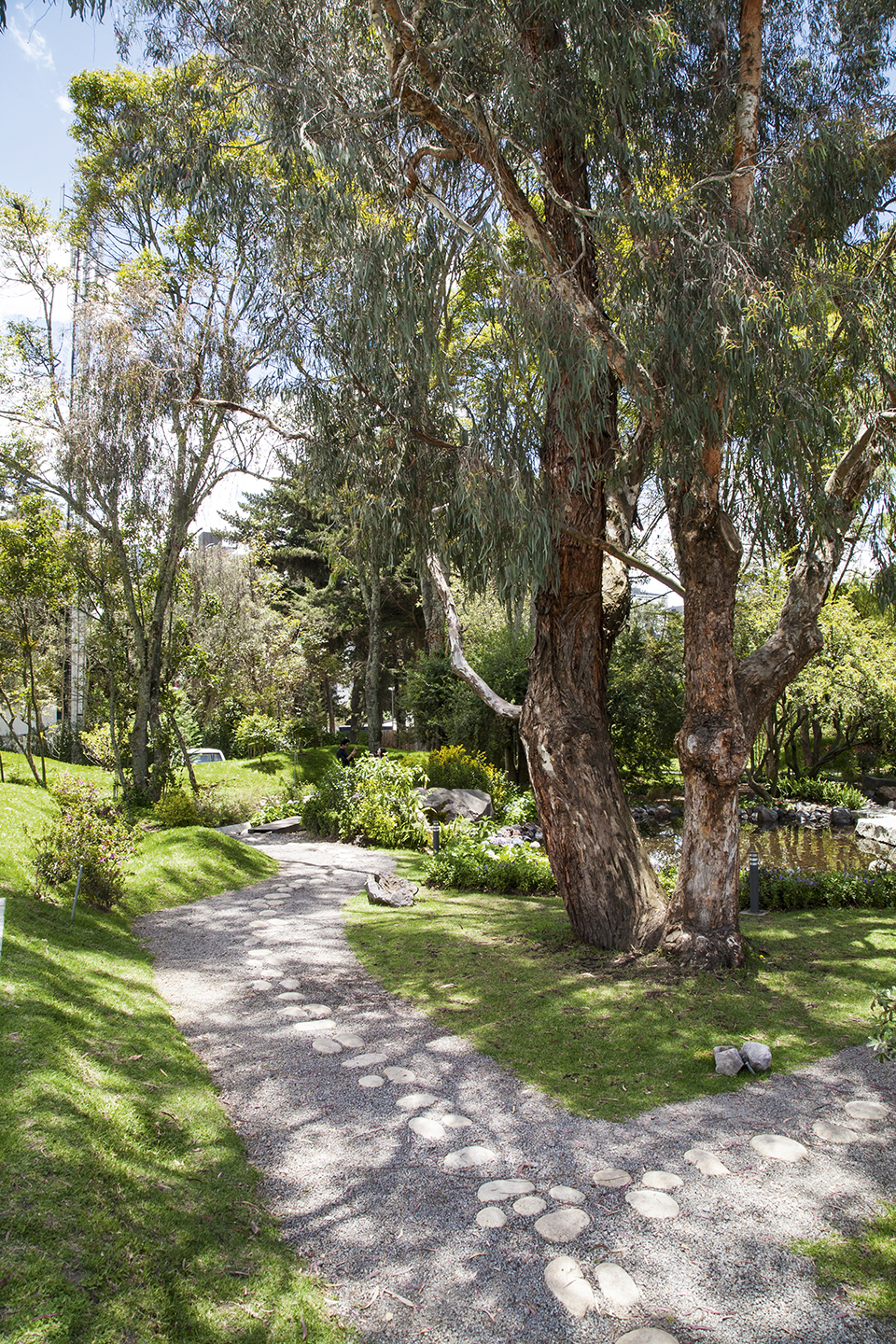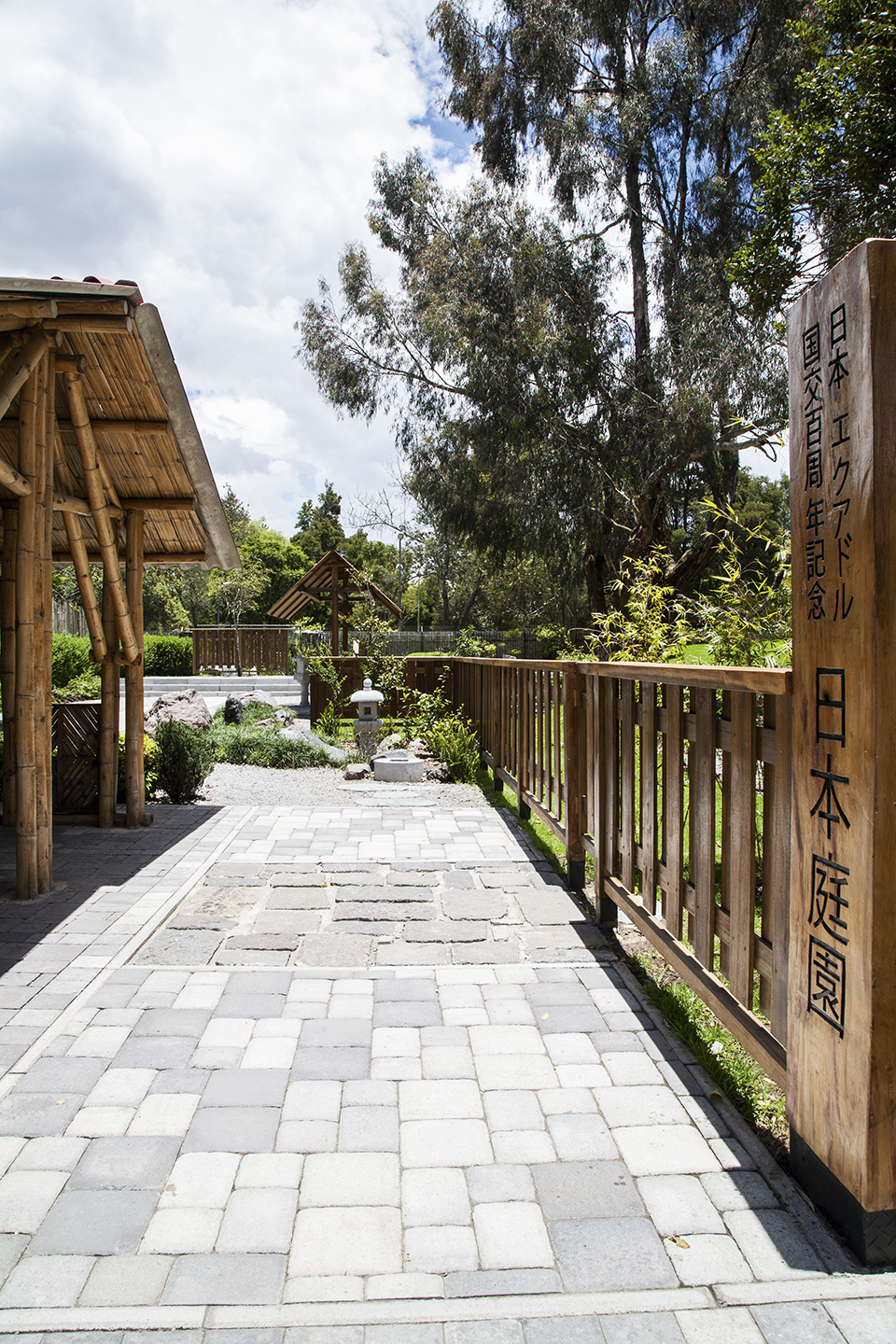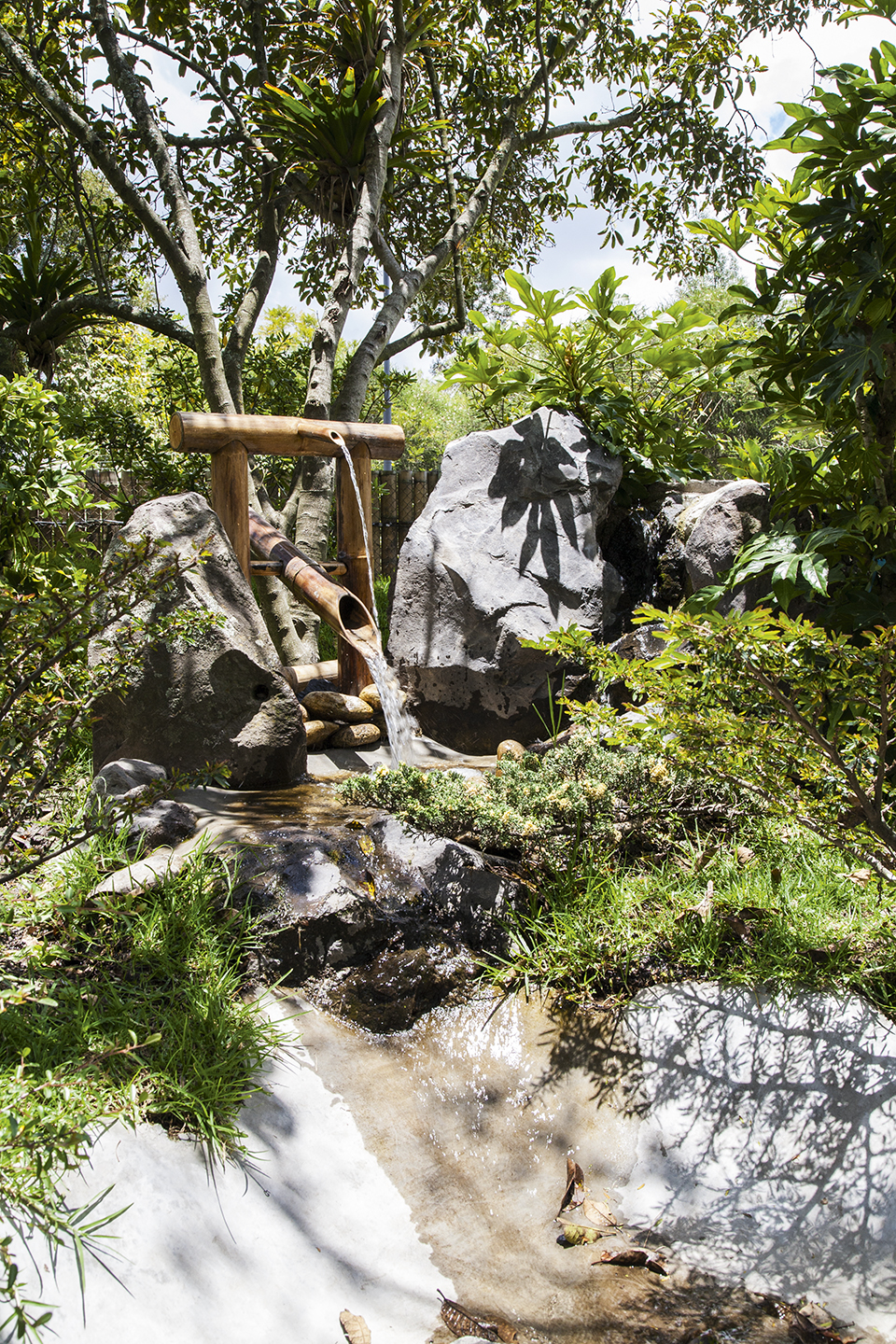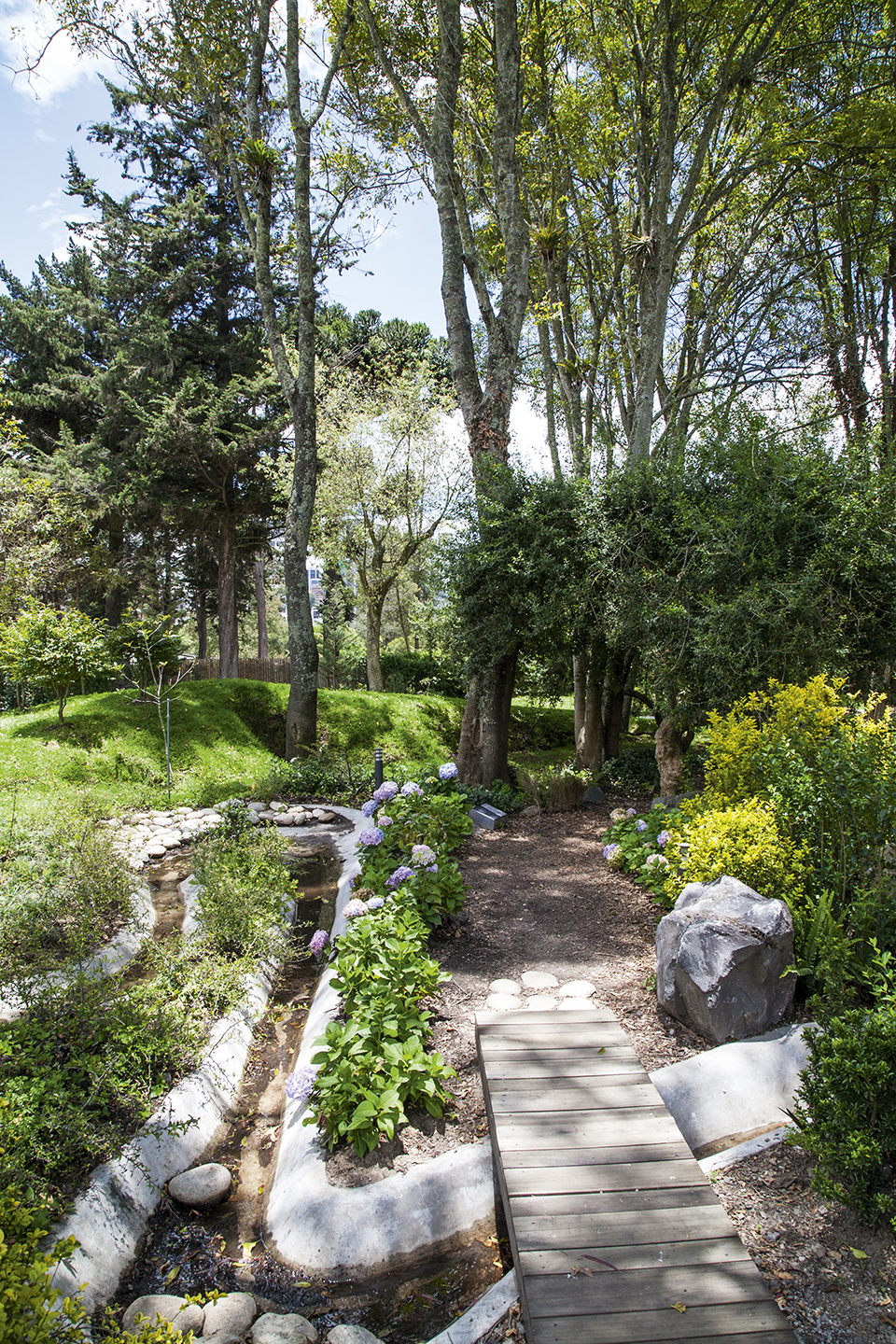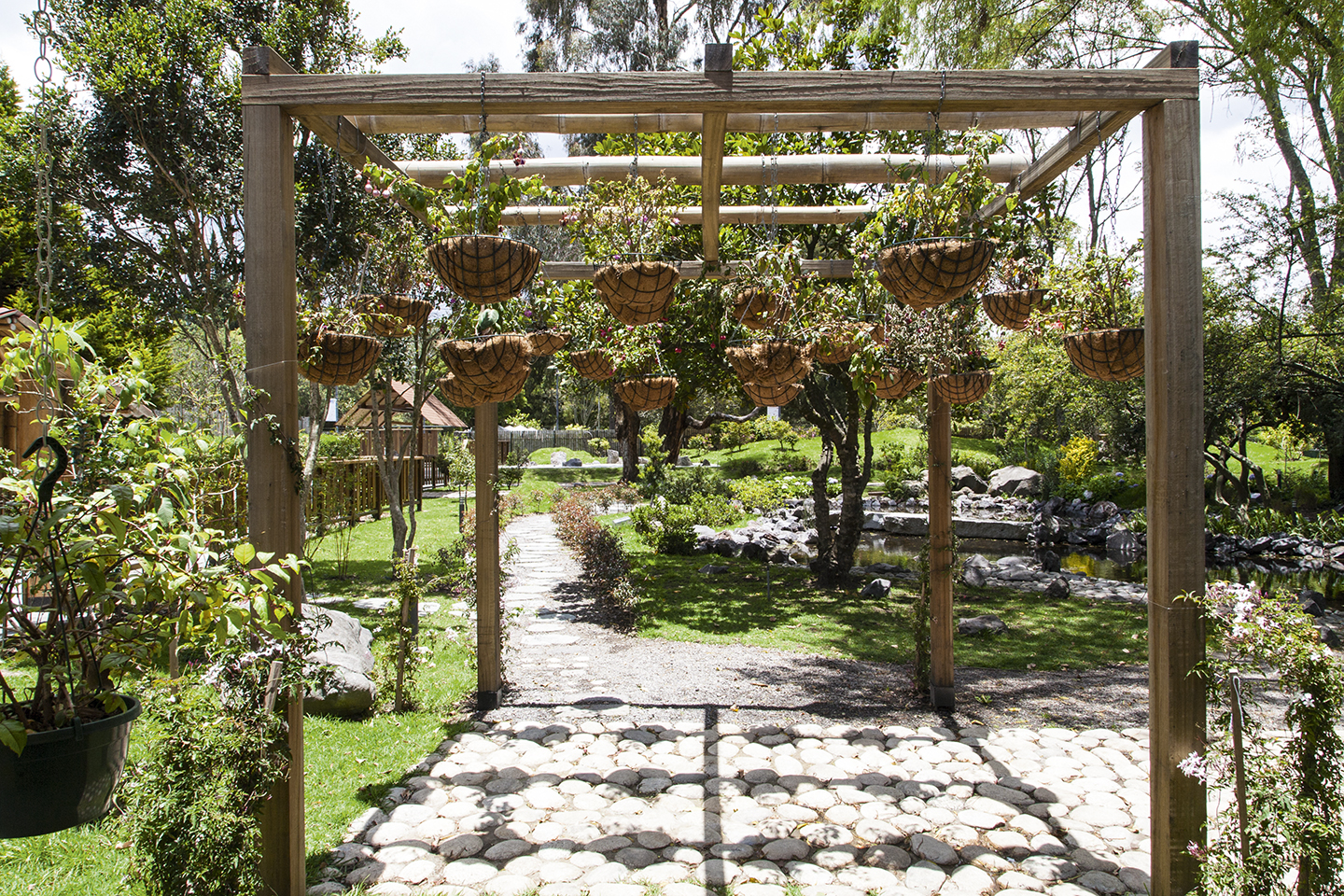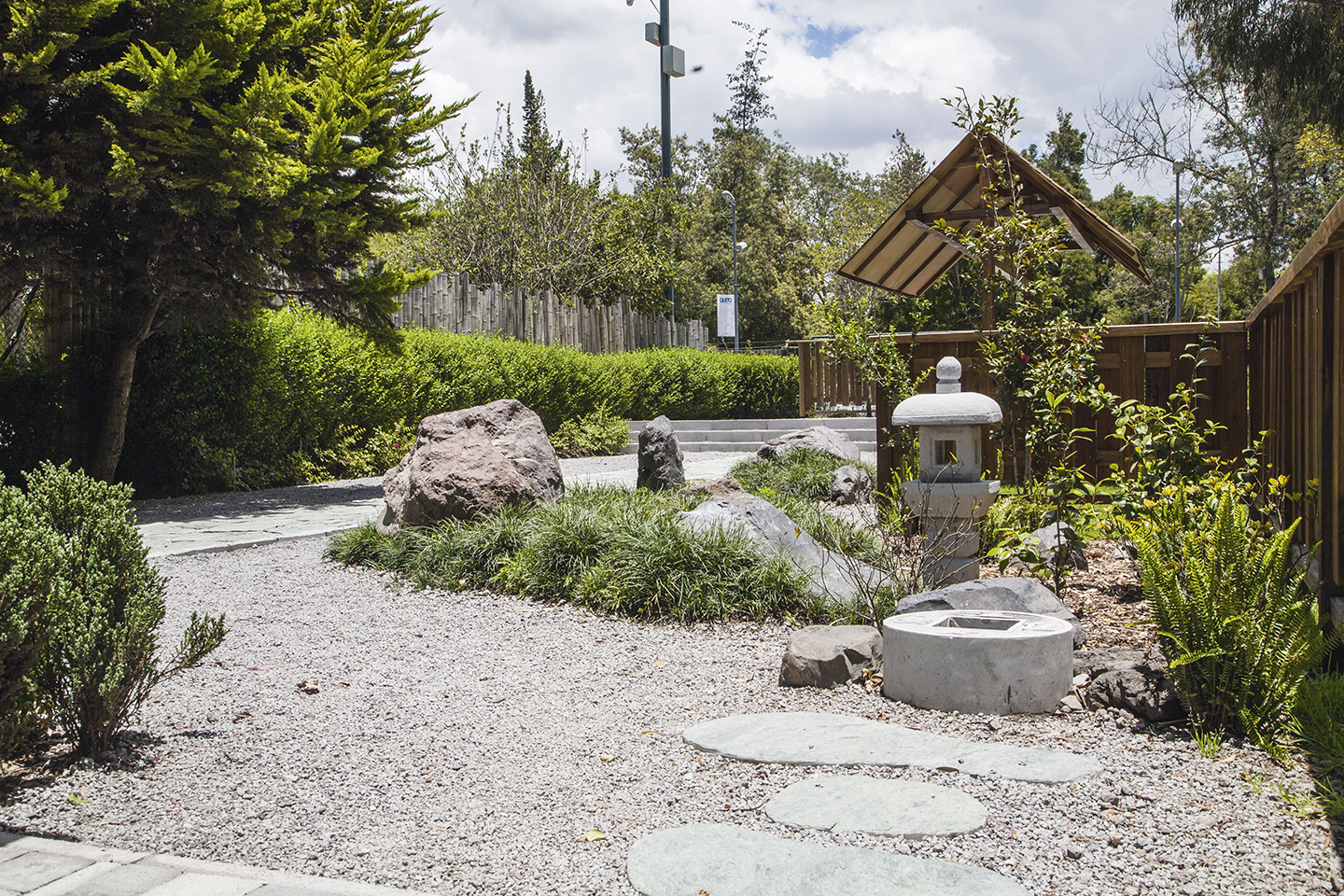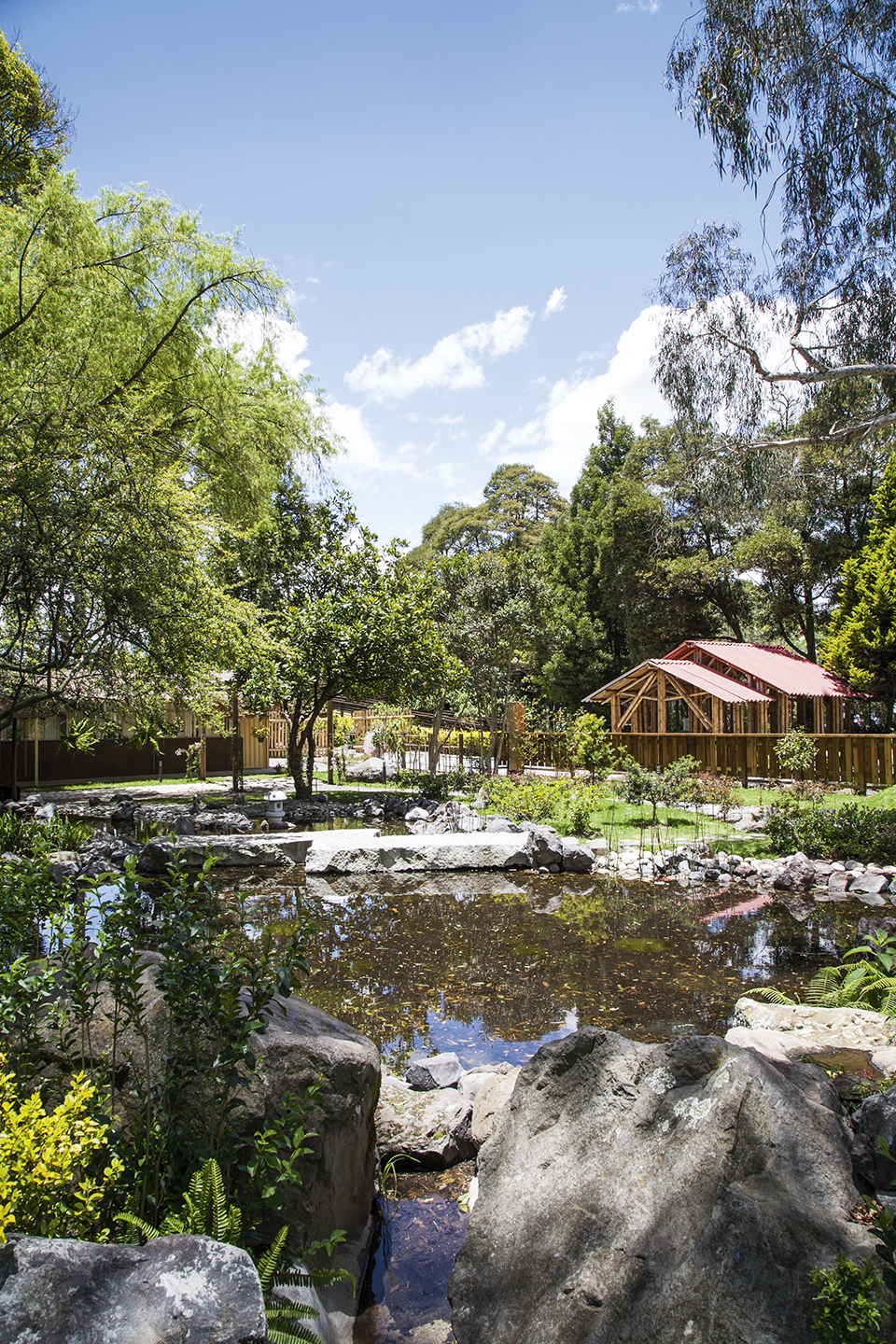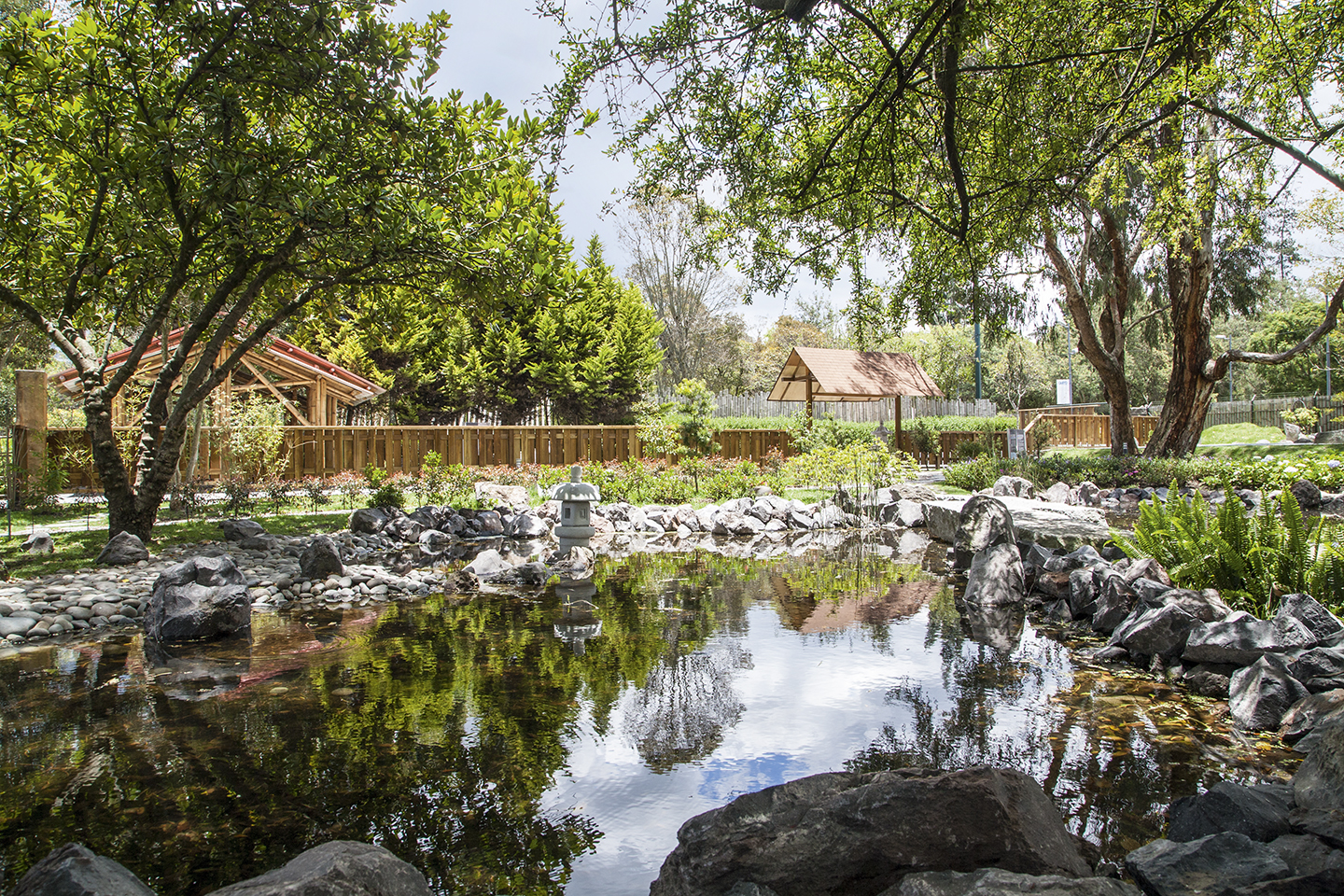Quito
Japanese Garden
Nestled in the middle of Carolina Park, inside the Quito Botanical Garden, a wooden gate opens into a natural oasis that is symbolic, spiritual and has a mystical air about it. This special place is none other than the Japanese Garden, recently opened as a display of the positive commercial and diplomatic relations between Ecuador and Japan.
Asian gardens are characterized by their simplicity and subtlety, designed for contemplation, meditation, and relaxation. The new Quito Japanese Garden is a clear example of this, and in a very short period of time has become a popular tourist attraction, especially for people who love Japanese landscapes and culture.
This approximately 17,000 ft2 garden was designed by Japanese landscape architect Komatu Kiyoshi, who was able to recreate a garden very similar to the internationally renowned and iconic Honbo Garden in Osaka, Japan.
As soon as visitors begin to walk through different volcanic and river stones, fresh, natural aroma and sound of water will fill them with peace and positive energy. The trails are called Tobiishi and Nobedan.
The first one is in the Karesansui or Zen Garden, which is inside of the Japanese Garden. The surface is covered with white sand and strategically placed stones. In the country of the rising sun, outside of temples it is very common to find dry gardens like this one.
Visitors then reach a lagoon in the heart of the garden, which symbolizes friendship between two countries. Fascinating decorative details include stone lanterns and a Tsukubai, which is the Japanese sink with a bamboo reed, from which a jet of water subtly falls, creating a harmonic sound.
While the garden contains a variety of native Japanese, Ecuadorian, and Andean species, one very special tree stands out in the background. This is the Arupo, which is the Ecuadorian equivalent of the Japanese cherry blossom tree, also known as Sakura, which symbolize the beauty of nature.
The tour finishes at Hyotan Square and the Tea House, where the age-old Tea Ceremony is often performed, a famous Japanese tradition. This ceremony is generally performed on the weekend and is open to the public.
A visit to this place gives a feeling of well-being and serenity, making it a perfect option for the family any day of the week. However, we recommend visiting on weekends so that when you finish the tour at the Japanese Garden, there is time to stop by the Bonsai Museum that is next door. You will be amazed!


